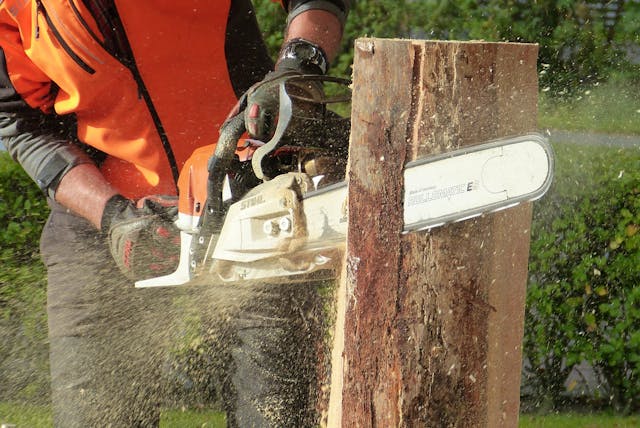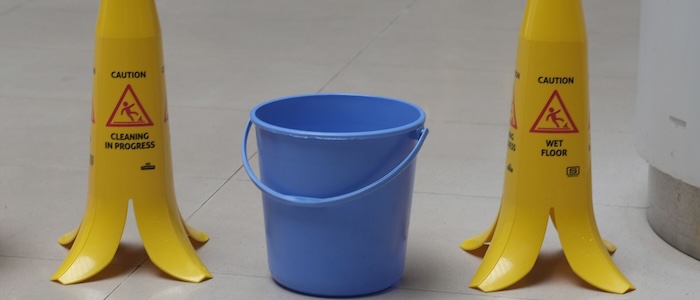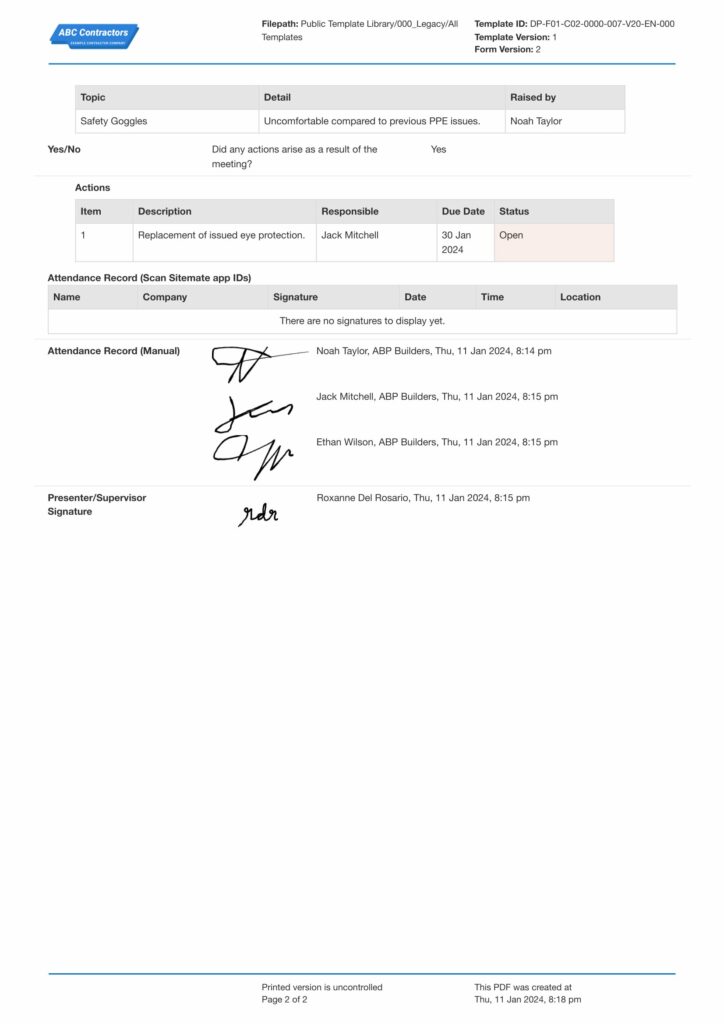Dashpivot Article – Chainsaw Eye Protection
Chainsaw Eye Protection
Chainsaw are incredibly dangerous. Let's delve into chainsaw eye protection and the different ways in which you or your team can properly safeguard your eyes when using chainsaws.

The Chainsaw
Hollywood's portrayal of chainsaws as a classic fright and dark humour emblem is well-known. It is almost always connected with horror movies, especially slashers and gore-heavy flicks. It is now among the most vicious death weapons produced in Hollywood films.
Apart from Hollywood, though, the chainsaw also carved its way (no pun intended) as a well-known and useful piece of equipment utilised in numerous sectors, particularly in construction and forestry. In the industry, chainsaws are mostly used for cutting and shaping wood, metal, concrete, and even ice. In addition to harvesting timber, limbing branches, and bucking wood into smaller deliverable pieces, they are widely employed in forestry to thin and cut branches to preserve tree health before harvest. Specialised chainsaws, such as diamond-tipped chains, were created in construction to cut through reinforced steel, masonry, and concrete. They are also used to demolish building drywall, metal pipes, wood beams, and pillars. These are simply a handful of the sectors where a chainsaw finds use. Apart from their terrifying image in the movie industry, the chainsaw is far more than this in other fields. In these other sectors, it is still a necessary tool for the completion of projects and building destruction as well as for other activities.
Chainsaw: A Hazard to the Eyes
This is not related to the fact that chainsaws are portrayed in Hollywood films in a manner that makes them appear to be frightening to look at. On the other hand, in this instance, this is a discussion of the reasons why chainsaws are dangerous, particularly towards the organs that are responsible for our sense of sight, which are the eyes. Despite the fact that chainsaws are really useful in certain industries, there is a possibility that they might cause damage to our eyes. Within this section, we will be talking about the dangers that chainsaws pose to our eyes, which have the potential to cause damage.
Flying Debris
Chainsaws are able to achieve great speeds, making the chain rotate rapidly along the guide bar. As soon as the chainsaw makes contact with the item that is to be cut and starts to spin, the action creates force, which causes bits, dirt, and dust that are on the material to fly off. These flying materials have the potential to travel at a high speed and might potentially reach our eyes, causing them to get punctured.
Kickback Impact
The event known as chainsaw kickback occurs when the travelling chain arrives at an abrupt stop or is unexpectedly diverted. This results in the chainsaw violently pivoting rearward in the direction of the person who is operating the chainsaw. The operator may lose control of the chainsaw as a result of this abrupt recoil, which might cause the chainsaw to fly in the direction of the operator's face. This can result in serious cuts and lacerations to the face as well as irreversible damage to the eyes.
Dusts Drying the Eyes
Dust is inevitably generated when sawing wood using a chainsaw. As a chainsaw cuts through the material, friction from the rotating chain breaks the wood into smaller and finer pieces. These wood dusts can go airborne and remain suspended for a long time. These wood dusts could land in the operator’s eyes, and as they accumulate, they will absorb the moisture in the tear ducts, which leads to dryness, discomfort, and long-term eye strain.
Chainsaw Eye Protection as Toolbox Talks
Chainsaws are known to be hazardous to our eyes, even if they are a tremendous help to various companies. It is crucial that companies and organisations that rely on these technologies for their everyday operations educate their staff about these risks. The most effective way to accomplish this is to hold a toolbox discussions. Toolbox talks are brief, informal meetings that cover safety-related subjects in order to maintain and advance workplace safety. However, a toolbox form with the subjects and some information must be created before the meeting. This will act as a manual for deciding what to talk about and how to do it. It also has a space for meeting participants to sign. This is to make sure they have grasped the material and will put what they have learned into practice. Having said that, discussing the hazards and risks that come with using a chainsaw during toolbox discussions would help inculcate into the worker's mind the responsibility to put the right measures in place to remove these hazards.
If you want to learn more about what topics to discuss during toolbox talks, read more at Toolbox Talk Ideas.
Chainsaw Eye Protection Toolbox Talk Example
You can see a good example of a chainsaw eye protection toolbox talk here

Use this free chainsaw eye protection toolbox talk format for free
Different Chainsaw Eye Protection
When running chainsaws, choosing the correct kind of eye protection is crucial to guarantee compliance with safety criteria and safety itself. Each of the numerous kinds of chainsaw eye protection available is meant to provide different degrees of protection for different jobs and environments. Knowing these choices enables consumers to select the most suitable equipment for their particular requirements.
Safety Eyewear
Eye protection that is the most fundamental type is known as safety eyewear. The lenses are made of polycarbonate or a similar material that is resistant to impact, and their purpose is to shield the eyes from flying pieces. A wide variety of varieties offer side protection, which eliminates the possibility of particles entering the eye region from a variety of directions. Even if they are suitable for professions that provide a lower risk of flying debris, safety glasses should be selected with great care to ensure that they meet the criteria for industrial safety.
Goggles
Goggles provide a higher level of protection than safety eyewear do (in comparison). They offer protection against particles coming from any direction, and their secure fit around the eyes makes them ideal for use. This particular type of eye protection is ideal for use in situations where additional protection against dust and wetness is required, as well as in environments where there is a significant risk of debris. Goggles are commonly used in conjunction with other protective gear in order to achieve the highest possible level of safety.
Face Shields
In order to provide the highest level of protection, face shields cover the entire face and serve as a barrier against harmful particles and large pieces of debris. For the purpose of providing comprehensive eye protection, they are often utilised in conjunction with safety goggles or glasses. It is recommended to use face shields when using heavy-duty chainsaws in situations where there is a high chance of flying debris. Choose face shields that are not only durable but also offer unobstructed and undistorted vision.
Headgear Systems
Offering a complete safety solution, helmet systems combine eye protection with head and occasionally audible protection. Along with a hard helmet and ear protection, these systems may need a mesh visor, protective glasses, or face shield. For long chainsaw operations—especially in construction or forestry where several risks exist—helmets are perfect. The combined strategy guarantees constant and efficient protection over several kinds of hazards.
Selection based on usage
Choose chainsaw eye protection based on the particular operation and degree of risk involved. Always choose items that either meet or surpass safety criteria established by pertinent authorities. Make sure the protective gear fits properly and does not interfere with any other protective gear or block view. To guarantee that eye protective equipment offers the required degree of safety over their usage, regular examination and maintenance of it is very vital.

Toolbox Talk Ladder Safety template
Keep any work involving ladders safe by running this Toolbox Talk Ladder Safety.

Heat Stress Toolbox Talk template
Avoid heat stress incidents with PPE, prevention and identify symptoms using this Toolbox Talk Heat Stress template.

Toolbox Talks Slips Trips and Falls template
Manage your teams safety with regards to slips, trips and falls with this Toolbox Talk template.

